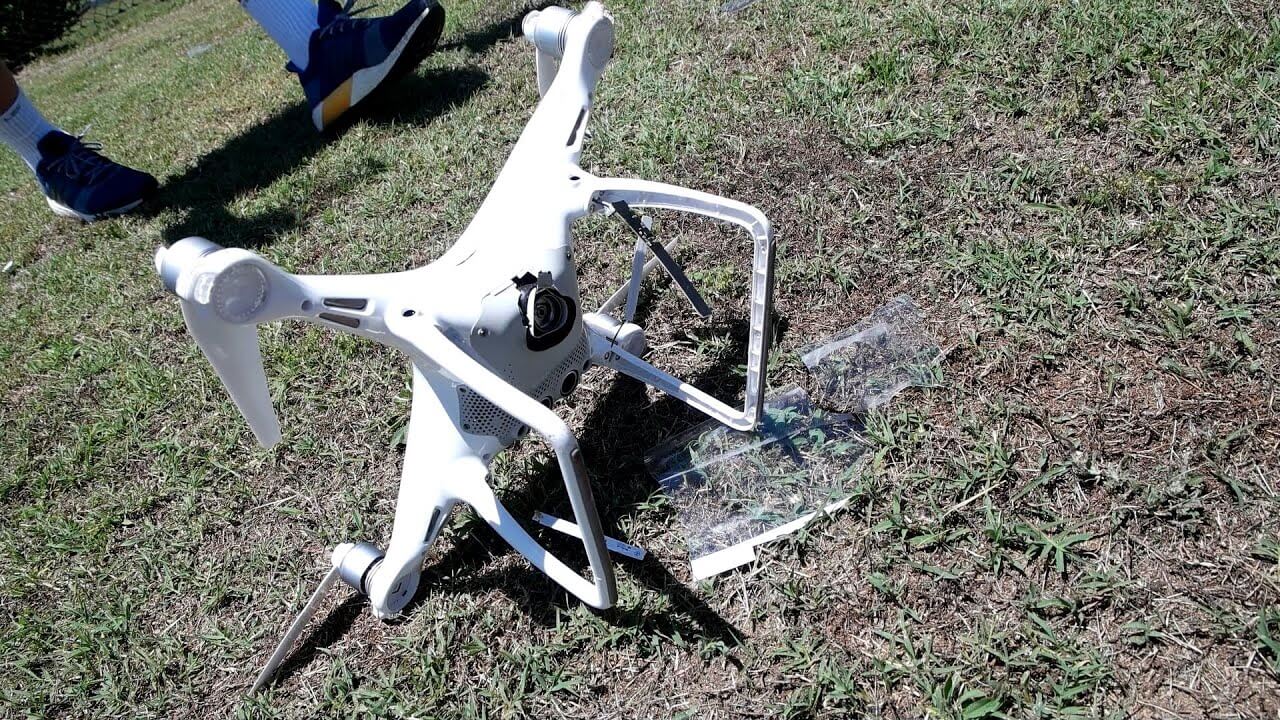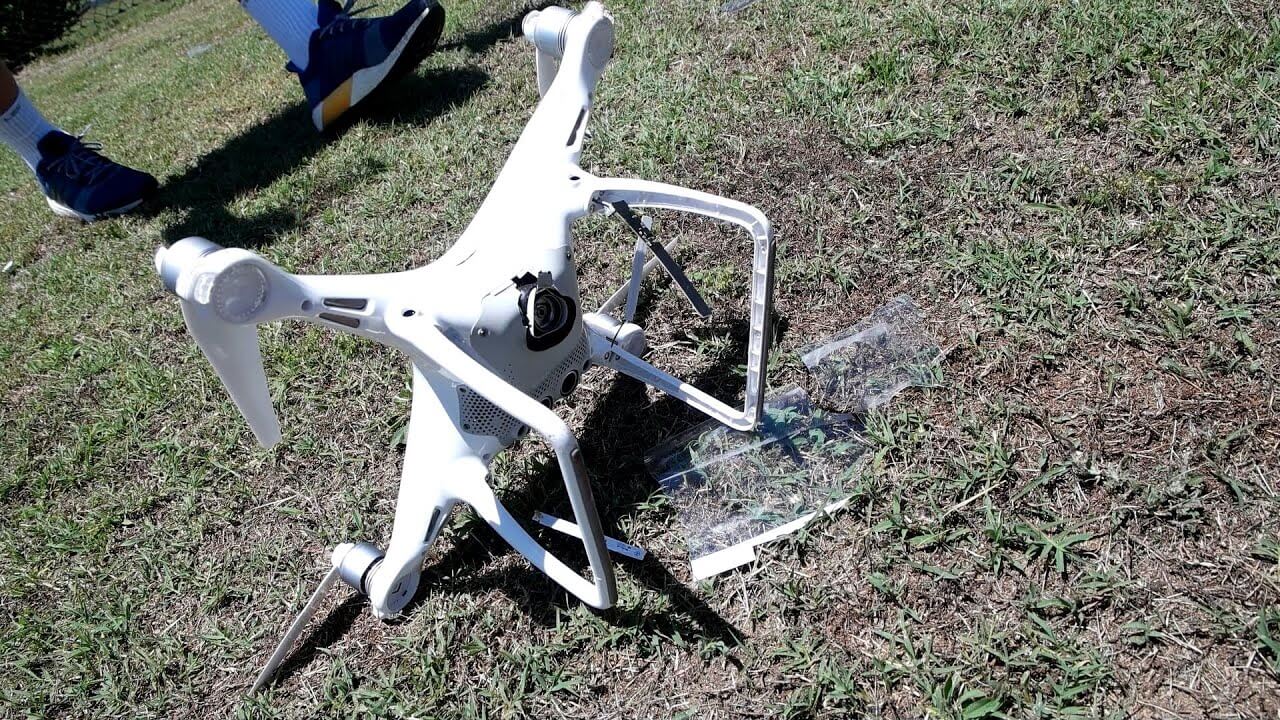Drone show crash: A spectacular failure of coordinated aerial artistry can quickly turn into a costly disaster. This guide explores the multifaceted reasons behind these incidents, from technical malfunctions to human error. We’ll delve into the various types of crashes, safety protocols, and post-incident procedures to help you understand how to minimize risk and maximize the chances of a successful, breathtaking drone show.
We’ll examine the technical intricacies, including GPS interference, communication breakdowns, and software glitches that can lead to catastrophic consequences. Furthermore, we’ll discuss the critical role of pilot training, the importance of redundancy systems, and the thorough investigation needed after a crash. By understanding these factors, we aim to equip drone show operators with the knowledge and strategies needed to ensure safe and successful performances.
Drone Show Crash Analysis: Understanding Causes and Prevention

Drone shows, while visually stunning, carry inherent risks. Understanding the various factors contributing to crashes is crucial for enhancing safety protocols and preventing future incidents. This analysis delves into the different types of crashes, safety measures, technical aspects, human factors, post-crash procedures, and illustrative examples to provide a comprehensive overview of this critical area.
Drone show crashes are unfortunately becoming more common, highlighting the need for robust safety protocols. A recent incident, similar in nature, involved a drone crash in Paris , which underscored the potential for malfunction even in well-planned displays. Understanding these failures is crucial for improving the safety and reliability of future drone shows, preventing similar accidents and ensuring a better experience for spectators.
Types of Drone Show Crashes

Drone show crashes can be categorized based on their root causes. These categories aren’t mutually exclusive; multiple factors often contribute to a single incident. Understanding these categories allows for targeted preventative measures.
| Type | Description | Common Causes | Prevention Strategies |
|---|---|---|---|
| Software Malfunction | Unexpected software behavior leading to erratic flight or system failure. | Bugs in flight control software, communication protocol errors, GPS glitches. | Rigorous software testing, redundancy in software modules, regular updates. |
| Hardware Failure | Mechanical or electrical failure of drone components. | Motor failure, battery malfunction, sensor failure, damaged propellers. | Pre-flight inspections, use of high-quality components, regular maintenance. |
| Pilot Error | Mistakes made by the drone operator during flight operations. | Incorrect programming, poor situational awareness, inadequate training, fatigue. | Comprehensive pilot training, simulator practice, standardized operating procedures. |
| Environmental Factors | External conditions impacting drone performance. | Strong winds, heavy rain, fog, GPS signal interference. | Weather monitoring, contingency plans for adverse weather, careful site selection. |
Failure modes can involve individual components, such as motor burnout leading to loss of control, battery failure causing sudden power loss, or flight controller malfunction resulting in erratic maneuvers. These failures can trigger cascading effects, where one malfunction leads to others, rapidly escalating the situation.
Safety Protocols and Regulations

Various safety regulations and protocols govern drone shows globally, varying in stringency. These regulations often address aspects such as pilot certification, airspace authorization, and emergency response procedures. A comprehensive safety checklist is essential for mitigating risks.
- Pre-flight inspection of all drones and equipment.
- Verification of flight plan and airspace authorization.
- Weather monitoring and contingency plans.
- Communication testing and redundancy.
- Emergency procedures and response protocols.
- Post-flight data analysis and maintenance.
Redundancy systems, such as backup flight controllers or communication links, are crucial in preventing catastrophic failures. If one system fails, the backup ensures continued operation, minimizing the impact of a single point of failure.
Technical Aspects of Drone Show Failure
Technical factors significantly contribute to drone show crashes. Understanding these factors allows for the development of more robust and reliable systems.
GPS interference can cause inaccurate positioning, leading to collisions or unexpected maneuvers. Communication disruptions can result in loss of control, while software bugs can introduce unpredictable behavior. Different flight control systems possess varying strengths and weaknesses concerning crash prevention. Some systems might offer advanced features like obstacle avoidance or autonomous recovery modes, enhancing safety. Data logging capabilities are crucial for post-incident analysis, allowing for the reconstruction of events and identification of root causes.
Human Factors in Drone Show Accidents
Pilot training and experience are paramount in preventing crashes. Inadequate training or fatigue can significantly increase the likelihood of human error. Specific scenarios, such as unexpected weather changes or equipment malfunctions, can highlight the need for effective pilot response training.
Drone show crashes are unfortunately becoming more common, highlighting the need for better safety protocols. Check out this article for insights into a recent incident: drone show crash. Understanding the causes of these malfunctions is crucial for preventing future accidents and ensuring the continued safe development of drone light shows. Learning from past drone show crashes is key to progress.
A scenario-based training exercise could involve simulating a sudden loss of GPS signal during a complex maneuver. Pilots would be assessed on their ability to maintain control, execute emergency procedures, and safely land the drones.
Drone show crashes are unfortunately becoming more common, highlighting the need for better safety protocols. A recent example that really illustrates this is the orlando drone show accident , which spurred investigations into potential causes. Learning from these incidents is crucial to preventing future drone show crashes and ensuring safer aerial displays for everyone.
Post-Crash Procedures and Investigation
A structured investigation is vital after a drone show crash. This involves securing the crash site, collecting evidence, and analyzing data to determine the root cause.
- Secure the crash site and prevent unauthorized access.
- Photograph and document the scene, including drone damage and surrounding environment.
- Collect any relevant data from the drones, such as flight logs and sensor readings.
- Interview witnesses and collect any available video footage.
- Analyze the collected data to determine the sequence of events and root cause.
Drone flight logs provide valuable insights into the events leading up to a crash. Analyzing parameters like altitude, speed, and GPS coordinates can help reconstruct the flight path and identify any anomalies.
Illustrative Examples of Drone Show Crashes
Analyzing past incidents provides valuable lessons. Consider three hypothetical scenarios:
Scenario 1: A sudden gust of wind during a nighttime show caused multiple drones to collide, resulting in a spectacular light display gone wrong. The wind speed was unexpectedly high (30 mph), exceeding the drones’ operational limits. Several drones suffered significant propeller damage and internal component failures.
Scenario 2: A software glitch caused a group of drones to perform uncontrolled maneuvers, leading to a chaotic sequence of collisions. The glitch was later traced to a faulty software update that hadn’t been properly tested. The drones sustained varying degrees of damage, including broken frames and damaged electronics.
Scenario 3: A pilot error during a complex synchronized maneuver resulted in one drone colliding with another, causing a chain reaction. The pilot was relatively inexperienced and misjudged the proximity of the drones. The impact caused significant damage to both drones, resulting in a fiery crash.
Closing Notes: Drone Show Crash
Preventing drone show crashes requires a multi-pronged approach encompassing rigorous safety protocols, advanced technical understanding, and highly trained pilots. By addressing the technical vulnerabilities, human factors, and implementing robust post-crash procedures, we can significantly reduce the likelihood of these spectacular failures. Ultimately, a proactive and comprehensive approach is key to ensuring the safety and success of future drone shows, transforming potential disasters into breathtaking spectacles.
FAQ Overview
What is the average cost of a drone show crash?
Costs vary widely depending on the scale of the show, the number of drones involved, and the extent of the damage. It can range from a few thousand dollars to hundreds of thousands, encompassing drone repair or replacement, potential damage to property, and legal fees.
How common are drone show crashes?
While statistically rare compared to the overall number of drone shows, crashes do occur. The frequency is influenced by factors like operator experience, weather conditions, and the complexity of the show choreography.
What insurance coverage is available for drone shows?
Specialized liability insurance policies are available for drone show operators, covering potential damage to property, injuries, and other liabilities. It’s crucial to secure adequate coverage to mitigate financial risks.
Are there any international standards for drone show safety?
While not fully standardized internationally, many countries and regions have their own regulations and guidelines. These often cover aspects like pilot licensing, airspace restrictions, and operational safety protocols.
